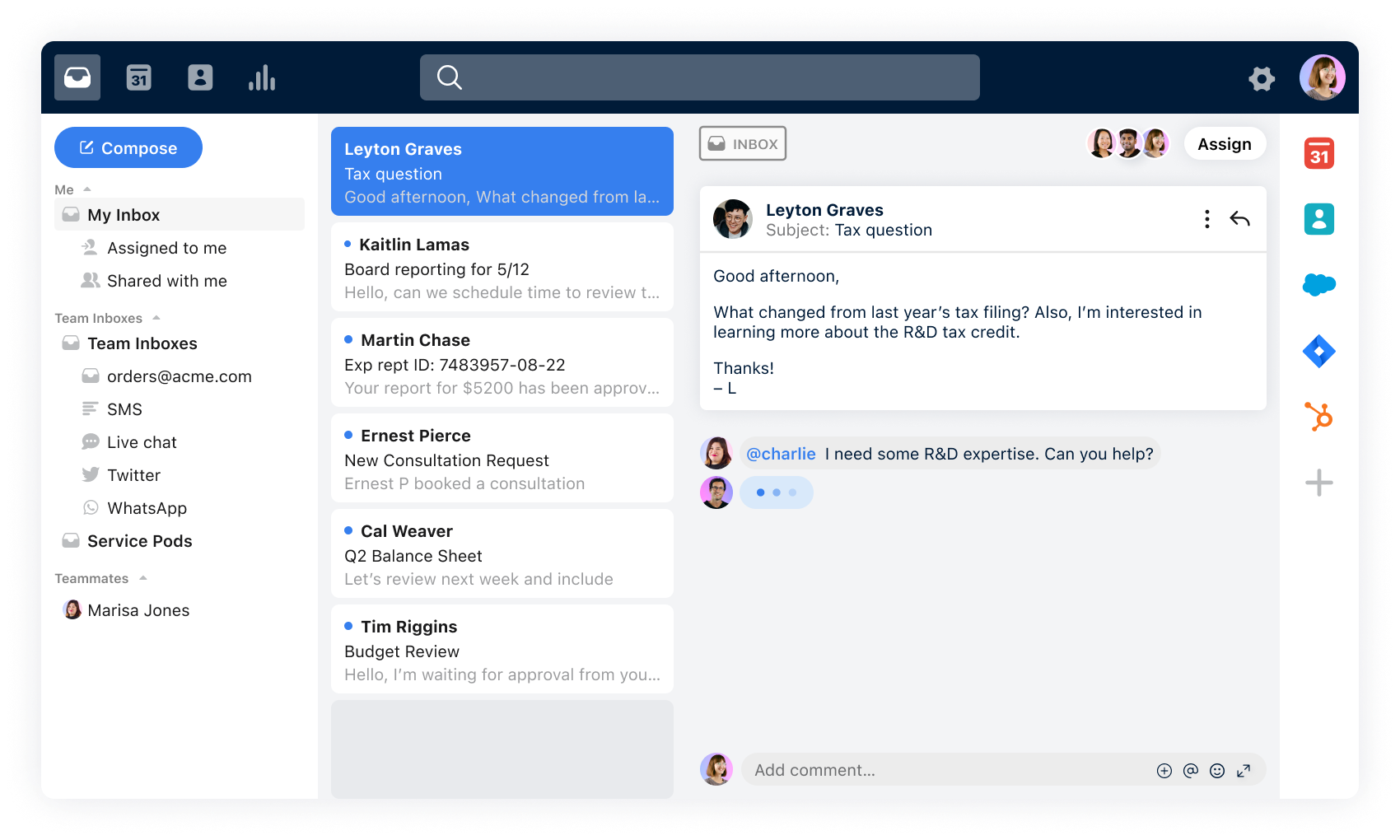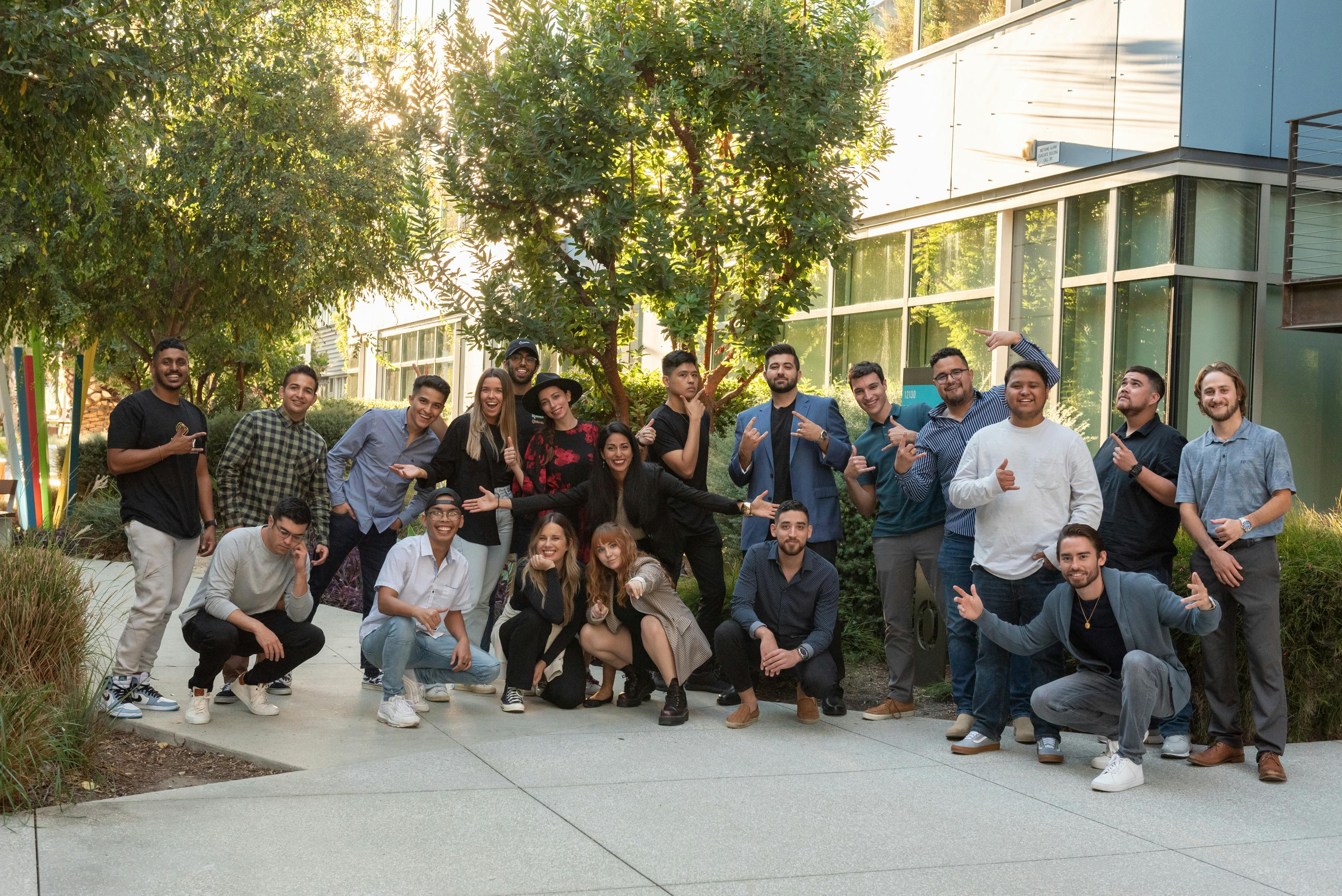Front for Professional Services
Foster stronger client relationships
Front is a customer operations platform that allows you to get a complete view of customer communication, design efficient workflows, and create clients for life.

Streamline service processes to focus on customers
Give your team time back to focus on client deliverables. Maximize efficiency with automation and better collaboration.
Gain visibility and hold your team accountable
Get a shared view of client communication and deliver better service—no more missed messages or dropping the ball.
Refine client operations with actionable data
Gain detailed insights into communication performance metrics, so you can optimize service quality and create lifelong clients.
9,000+ businesses deliver 5-star client experiences with Front
We have seen a significant increase in communication quality while reducing the daily email burden on our team. Less work, better output, and more consistency as we scale the business.
Make service quality your competitive edge
Never ask a client to repeat themselves again
Centralize messages in shared inboxes to get a full picture of client history. Keep the personal touch of email while easily working together behind the scenes.
Ensure no customer request slips through the cracks
Route messages to the right teammate based on flexible criteria. Seamlessly handle time-off and coverage, ensuring clients always get 5-star service.
Collaborate seamlessly to deliver polished responses
Loop in account team members to work on shared drafts and align with stakeholders using internal comments. Replies will always be fast and thorough.
Improve service quality with powerful analytics
Get metrics that are crucial to client experience — such as handle time, SLA attainment, and reply time. Optimize your processes informed by data.
Boostability centralized messages into a single platform and responds 3x faster, exceeding their clients expectations.
The Cleverly team saw a 40% efficiency improvement thanks to automated workflows and productivity features.
With Front, Seafoam Media is responding 2x faster and beating their 24 hour service-level agreement (SLA) goal.
Work together to deliver a better client experience
Account Management
Form deeper client relationships by having complete customer context at your fingertips.
Operations
Collaborate with key project stakeholders on client deliverables and ensure a flawless execution.
Finance and Accounting
Process invoices faster and eliminate duplicate replies thanks to reduced email volume and clear ownership.
Customer Service
Provide swift, helpful answers when clients have questions or encounter technical obstacles.





Connect the apps your teams need to get work done
Bring data into Front and improve teammate productivity





How do we stack up?
Front
For teams who need to deliver exceptional customer service with speed.
Designed for collaboration—single message with team visibility
Integrates data from all systems
Automation eliminates manual workflows
Provides robust analytics on teams and customers
One inbox that integrates all communication channels into a single interface
Designed for personal, one-to-one communication... that’s about it.
Distribution groups result in duplicate copies and missed messages
Customer context lives in 3rd party apps
Does not support automation
Cannot be measured, so it can’t be improved
Team members switch between different tools for different channels
Communication is so important to client happiness. We pride ourselves on taking the time to show our work, every step of the way. Front has allowed us to do this more effectively than ever before.




